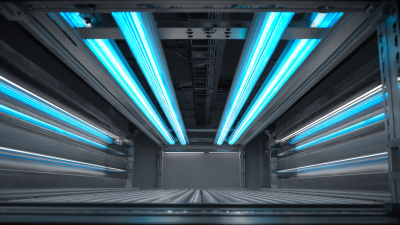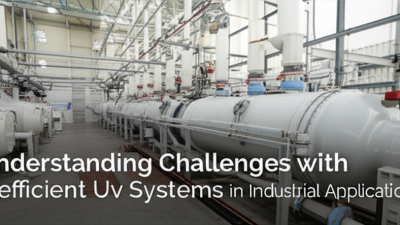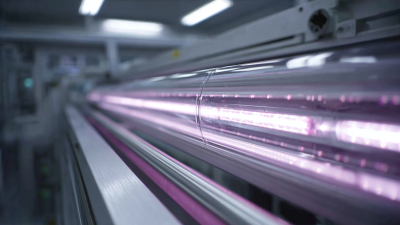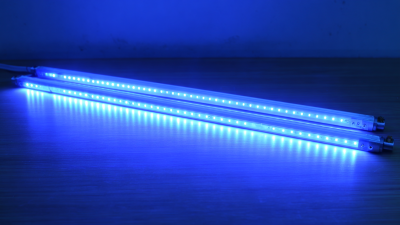Leave Your Message
-
Phone
-
E-mail
-
Whatsapp
In recent years, the integration of Ultraviolet Light Systems into various aspects of everyday life has gained significant attention, largely due to their effectiveness in enhancing safety and hygiene. According to a report from the International Ultraviolet Association, the use of UV-C light has shown to inactivate up to 99.9% of viruses and bacteria within seconds, making it an invaluable tool in combating infectious pathogens. As we continue to navigate an increasingly health-conscious society, the demand for effective disinfection methods has propelled Ultraviolet Light Systems to the forefront of technological solutions across multiple industries, including healthcare and food processing.

Moreover, studies conducted by the Centers for Disease Control and Prevention (CDC) indicate that the use of UV light in air purification and surface disinfection could significantly reduce the burden of airborne illnesses and surface contaminants. The rising prevalence of UV-based technologies in personal and commercial environments highlights not only their practicality but also the growing consumer awareness regarding health and hygiene practices. This article explores the top five benefits of Ultraviolet Light Systems, illustrating the seamless integration of science into everyday routines while emphasizing their transformative impact on improving public health standards.
Ultraviolet (UV) light systems have become increasingly pivotal in disinfection and sterilization practices across various industries. According to a report from the Global UV Disinfection Market, the industry is projected to grow significantly, with a CAGR of around 26% from 2020 to 2027. This surge is driven by the rising need for effective and environmentally friendly disinfection methods, especially in healthcare settings where infection control is critical. UV-C light, in particular, has proven effective in inactivating a wide array of pathogens, including bacteria and viruses, making it a popular choice for hospitals and public spaces.
Moreover, the efficacy of UV light systems is backed by scientific studies; for instance, research published in the American Journal of Infection Control demonstrates that UV disinfection can reduce healthcare-associated infections by up to 30%. Beyond healthcare, these systems are being adopted in food processing, water treatment, and even residential environments, illustrating their versatility. This effectiveness not only highlights the practicality of UV systems but also represents a significant advancement in our approach to maintaining public health standards, especially in light of recent global health challenges.
| Application | Effectiveness | Time Required | Benefits | Limitations |
|---|---|---|---|---|
| Water Purification | Effective against bacteria and viruses | 30 seconds to a few minutes | No chemicals needed; Safe for the environment | Does not remove physical impurities |
| Surface Disinfection | High efficacy against a range of pathogens | 1 to 5 minutes depending on surface area | Fast action; User-friendly systems | UV light can be harmful to skin and eyes |
| Air Sterilization | Reduces airborne pathogens effectively | Continuous operation recommended | Improves air quality; Reduces allergies | Requires proper installation and maintenance |
| Food Safety | Effective against foodborne pathogens | Seconds for surface treatment | Extended shelf life; Chemical-free | Does not replace proper food handling practices |
Ultraviolet (UV) light systems have emerged as a powerful tool for enhancing air quality in indoor environments. With concerns about air pollutants and allergens on the rise, the integration of UV technology in places like homes, offices, and even schools can lead to significant health benefits. UV light operates by neutralizing harmful microorganisms such as bacteria, viruses, and mold spores present in the air. This not only creates a cleaner atmosphere but also reduces the risk of airborne diseases and allergies.
Tips for optimizing UV light systems:
1. Regularly replace UV bulbs to ensure maximum effectiveness throughout their lifespan.
2. Position UV lights in well-ventilated areas where air circulation is strong, allowing for more comprehensive purification.
3. Combine UV light technologies with other air purification methods, such as HEPA filters, for enhanced results.
By leveraging the science behind UV light, we can create healthier indoor spaces. As we increasingly spend time indoors, understanding and implementing these systems becomes more crucial for well-being. This blend of scientific innovation and practical application ensures that indoor environments not only feel fresh but also contribute to a healthier lifestyle.
Ultraviolet (UV) light, particularly UV-C light, plays a pivotal role in water purification processes. According to a report by the World Health Organization (WHO), UV radiation is effective in inactivating a variety of pathogens, including bacteria, viruses, and protozoa, making it a powerful tool for ensuring safe drinking water. This technology relies on short-wavelength UV-C light, which disrupts the DNA and RNA of microorganisms, rendering them unable to reproduce and cause illness. In fact, studies indicate that UV-C treatment can achieve a 99.99% reduction in waterborne pathogens within seconds, providing a quick and effective solution for water safety.
Moreover, the use of UV-C light in water purification systems aligns with stringent safety standards enforced by health organizations. For instance, the U.S. Environmental Protection Agency (EPA) includes UV disinfection as an approved technology for potable water treatment, citing its efficiency and environmental sustainability. Unlike chemical disinfectants, UV-C systems do not introduce harmful byproducts into the water, making them a more eco-friendly option. Reports suggest that adoption of UV technology can lead to significant reductions in chlorinated byproducts, addressing health concerns while ensuring compliance with regulatory standards. As urban areas face increasing pressures on water quality, UV-C light emerges as a practical and scientifically validated solution for enhancing public health safety.
Ultraviolet (UV) light systems are gaining traction in agriculture for their potential to enhance crop health and manage pests effectively. The integration of UV technology into pest control can significantly reduce reliance on chemical pesticides, promoting sustainable agricultural practices. As of 2023, the global biopesticide market is valued at approximately $8.12 billion and is expected to grow to $13.01 billion by 2031, reflecting a compound annual growth rate of 6.16%. This growth is driven by an increasing demand for environmentally friendly pest management solutions and the ongoing transition toward sustainable agriculture.
Incorporating UV light for pest control works by damaging the DNA of pests, effectively mitigating infestations without harming beneficial insects. Moreover, advanced agricultural drones equipped with AI are increasingly being used for crop monitoring and precise application of UV treatment, reinforcing the combination of technology and practicality in modern farming. Today's agriculture drones market is on a trajectory of rapid growth, showcasing their role in enhancing agricultural efficiency through targeted interventions.
**Tips:** Implementing UV light systems can maximize crop yields while minimizing environmental impact. Consider combining UV technology with other sustainable practices such as biological pest controls for a more holistic approach. Always monitor pest populations and crop health to optimize the efficacy of UV applications, ensuring you remain informed of the latest agricultural advancements.
Ultraviolet (UV) light systems have gained popularity in various aspects of daily life, particularly due to their potential health benefits. Understanding the health implications of UV exposure is crucial, as it can significantly impact our well-being. UV light, especially UV-C, is known for its germicidal properties, effectively inactivating viruses and bacteria. According to the World Health Organization, the use of UV disinfection not only reduces the spread of infectious diseases but also contributes to safer environments in homes and public spaces.
While UV exposure can be beneficial, it is important to manage it responsibly to avoid adverse effects such as skin damage and eye injuries. The Skin Cancer Foundation reports that even short exposure to UV rays can lead to skin aging and increase the risk of skin cancer, emphasizing the need for protective measures.
Tips for Safe UV Exposure:






